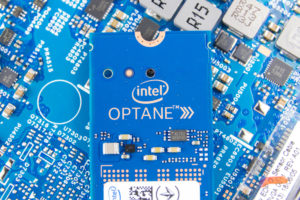
Barcelona Supercomputing Center Powers Encrypted Neural Networks with Intel Tech

Homomorphic encryption provides two extraordinary benefits: first, it has the potential to be secure against intrusion by even quantum computers; second, it allows users to use the data for computation without necessitating decryption, enabling offload of secure data to commercial clouds and other external locations. However – as researchers from Intel and the Barcelona Supercomputing Center (BSC) explained – homomorphic encryption “is not exempt from drawbacks that render it currently impractical in many scenarios,” including that “the size of the data increases fiercely when encrypted,” limiting its application for large neural networks.
Now, that might be changing: BSC and Intel have, for the first time, executed homomorphically encrypted large neural networks.
“Homomorphic encryption … enables inference using encrypted data but it incurs 100x–10,000x memory and runtime overheads,” the authors wrote in their paper. “Secure deep neural network … inference using [homomorphic encryption] is currently limited by computing and memory resources, with frameworks requiring hundreds of gigabytes of DRAM to evaluate small models.”
To do that, the researchers deployed Intel tech: specifically, Intel Optane persistent memory and Intel Xeon Scalable processors. The Optane memory was combined with DRAM to supplement the higher capacity of persistent memory with the faster speeds of DRAM. They tested the combination using a variety of different configurations to run large neural networks, including ResNet-50 (now the largest neural network ever run using homomorphic encryption) and the largest variant of MobileNetV2. Following the experiments, they landed on a configuration with just a third of the DRAM – but only a 10 percent drop in performance relative to a full-DRAM system.
“This new technology will allow the general use of neural networks in cloud environments, including, for the first time, where indisputable confidentiality is required for the data or the neural network model,” said Antonio J. Peña, the BSC researcher who led the study and head of BSC’s Accelerators and Communications for High Performance Computing Team.
“The computation is both compute-intensive and memory-intensive,” added Fabian Boemer, a technical lead at Intel supporting this research. “To speed up the bottleneck of memory access, we are investigating different memory architectures that allow better near-memory computing. This work is an important first step to solving this often-overlooked challenge. Among other technologies, we are investigating the use [of] Intel Optane persistent memory to keep constantly accessed data close to the processor during the evaluation.”
To learn more about this research, read the research paper, which is available in full here.
January 17, 2025
- ServiceNow Accelerates Agentic AI Roadmap with Acquisition of AI Native Conversation Data Analysis Platform Cuein
- ZEDEDA Opens Middle East Headquarters in Abu Dhabi to Support Regional Growth
- Prophecy Raises $47M to Accelerate AI-Powered Data Transformation
- Quantiphi Achieves Google Cloud Data Analytics Migration Specialization
- LANL Explores Diffusion-Based AI Models for Accelerator Diagnostics
- Concentric AI Introduces Private Scan Manager for On-Premises Data Security Governance
- Qlik Partners with TD SYNNEX to Scale Business AI Across North America and Europe
- Dynatrace Extends Compliance and Resilience Capabilities to Support DORA EU Regulation
January 16, 2025
- NVIDIA Releases NIM Microservices to Safeguard Applications for Agentic AI
- Atlan Named a Visionary in 2025 Gartner Magic Quadrant for Data and Analytics Governance Platforms
- Cognite Recognized as a Leader in Industrial Data Management Solutions
- Domo Powers Response Media’s Data-Driven Marketing Strategy
- Dataiku Expands Global Reach with Over 700 Enterprise Customers
- Lenovo to Acquire Infinidat, Further Expanding Enterprise Storage Portfolio
- ThoughtSpot Launches Analyst Studio to Accelerate Data Readiness for AI
- Moveworks Expands Microsoft Partnership, Integrates with Microsoft 365 Copilot
- EPAM Expands Collaboration with Google Cloud to Deliver Scalable AI Solutions
- Gartner Announces Gartner Data & Analytics Summit 2025
- Red Hat Unveils Red Hat OpenShift Virtualization Engine



























